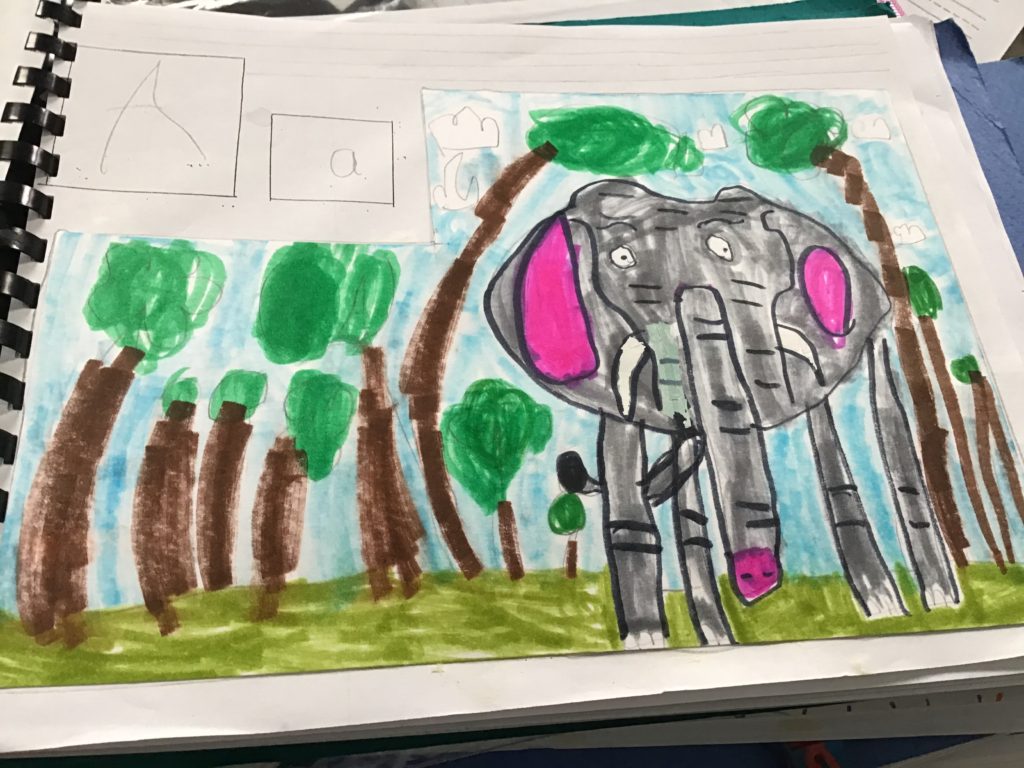
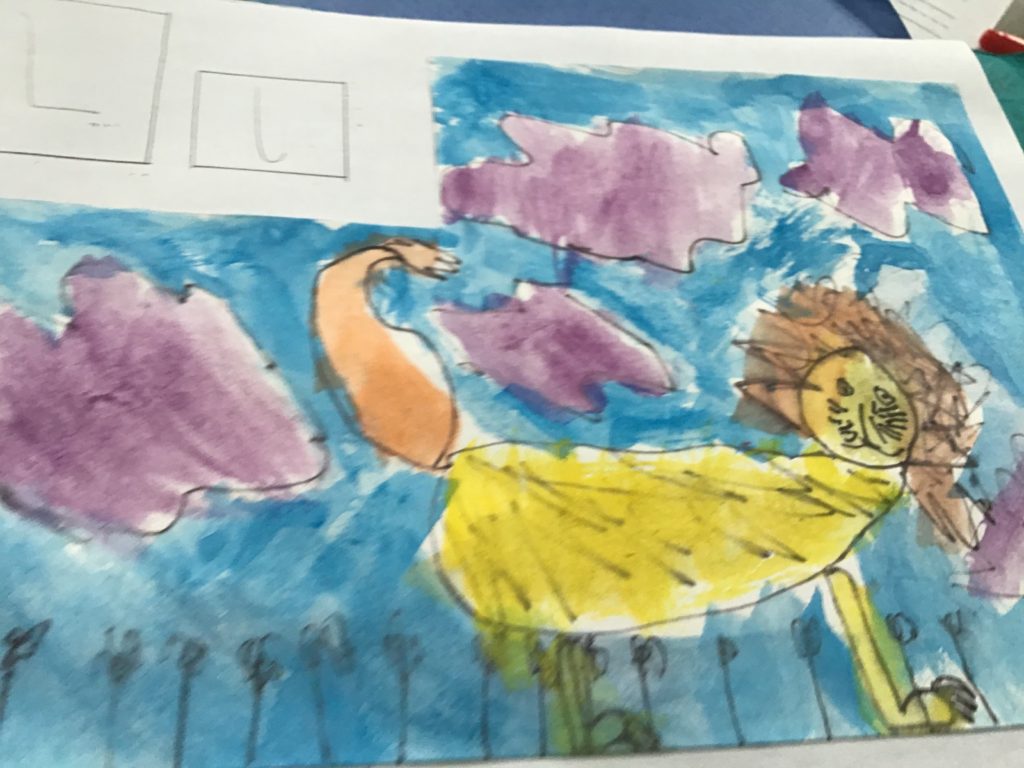

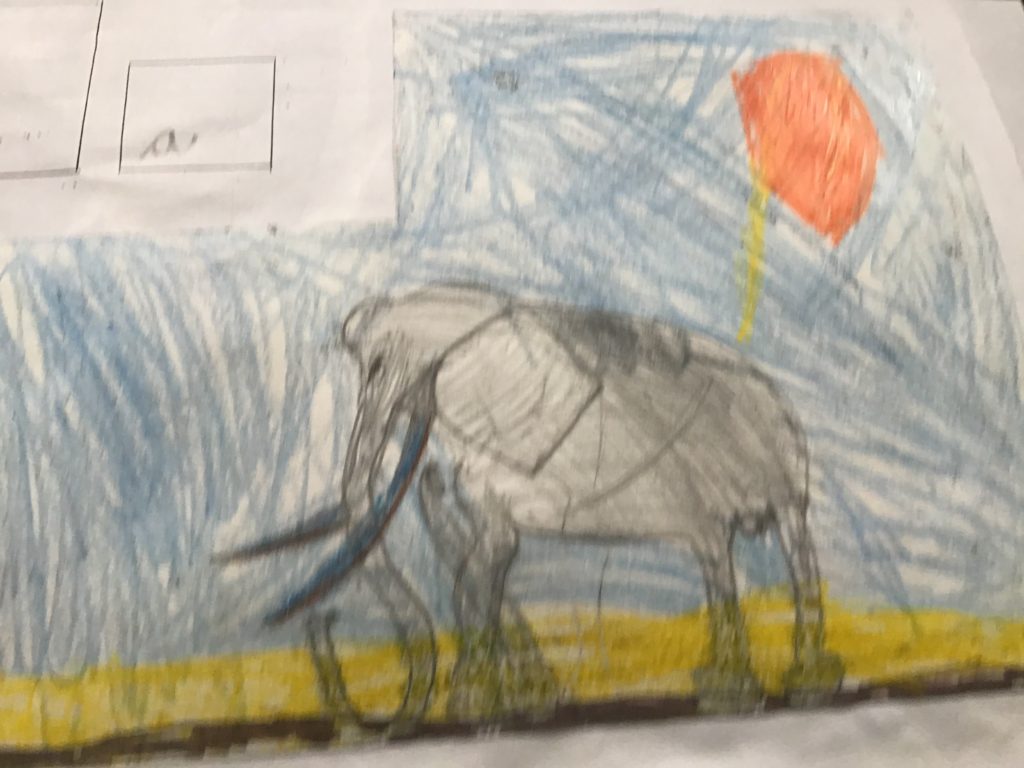
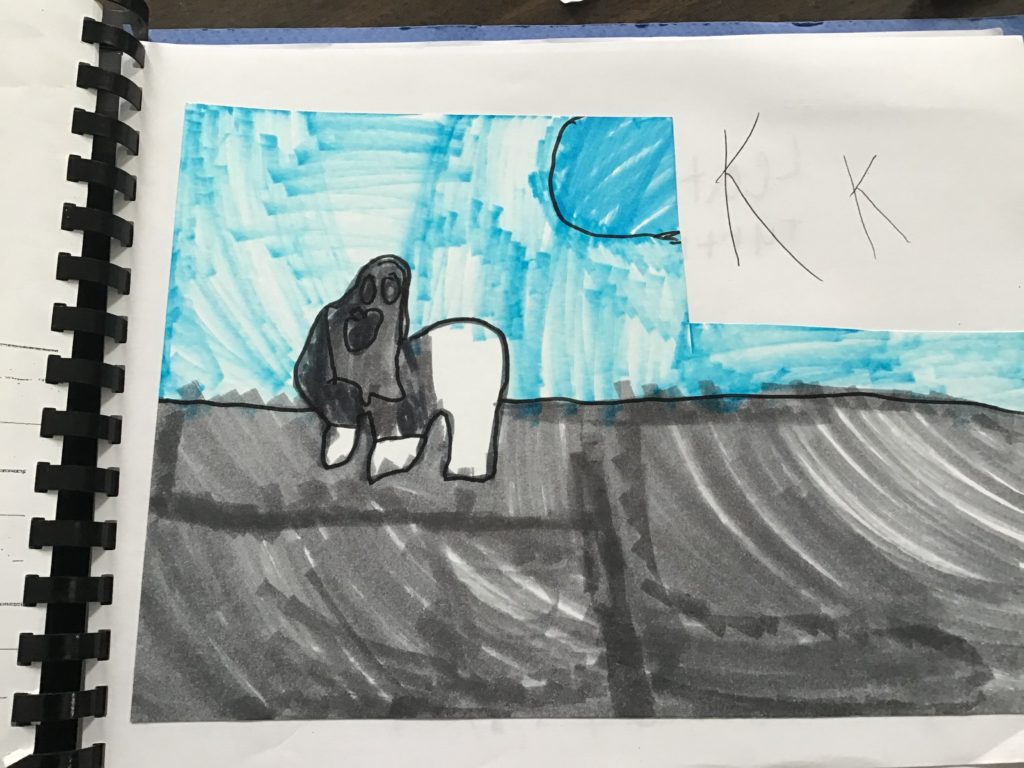
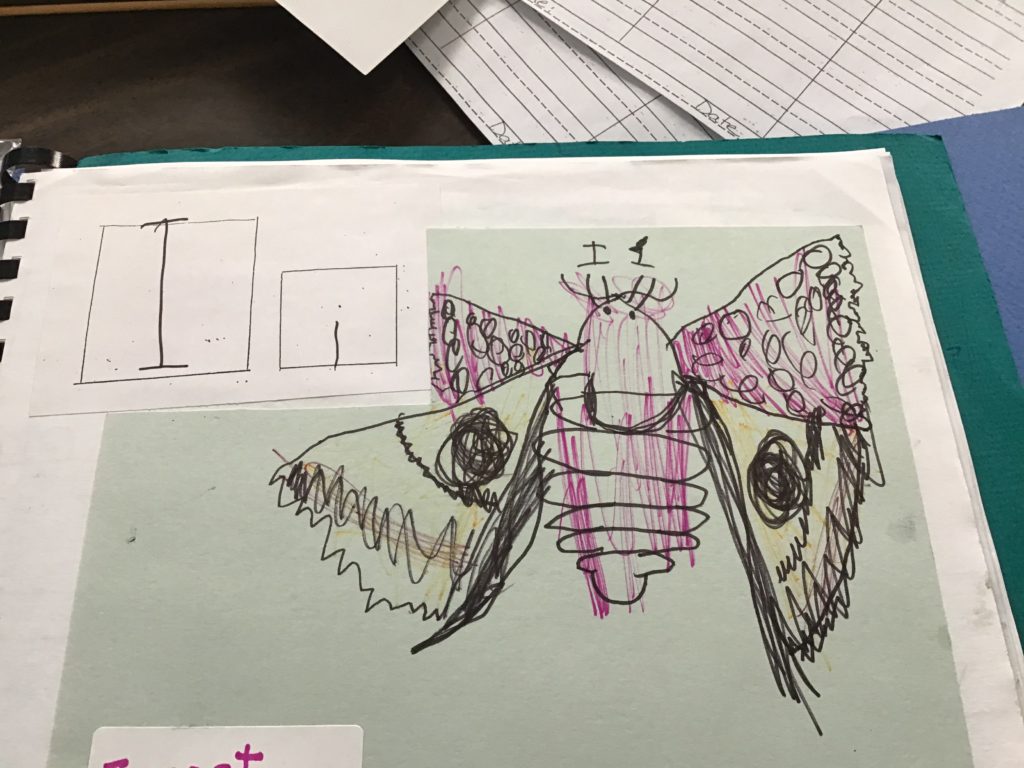
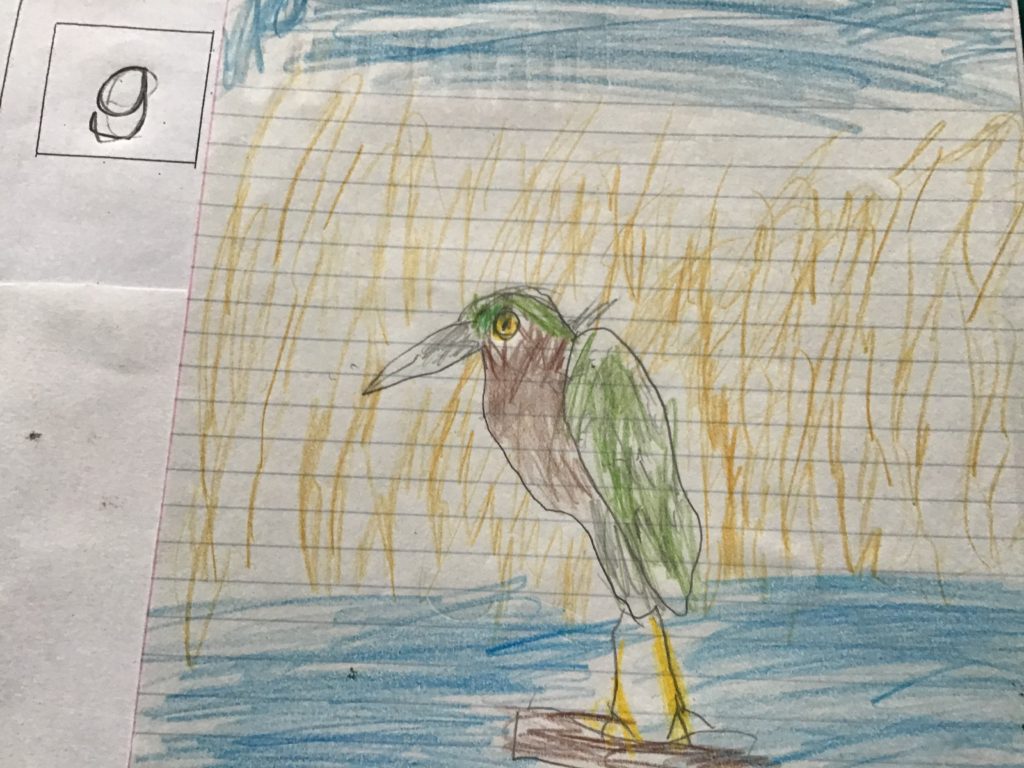
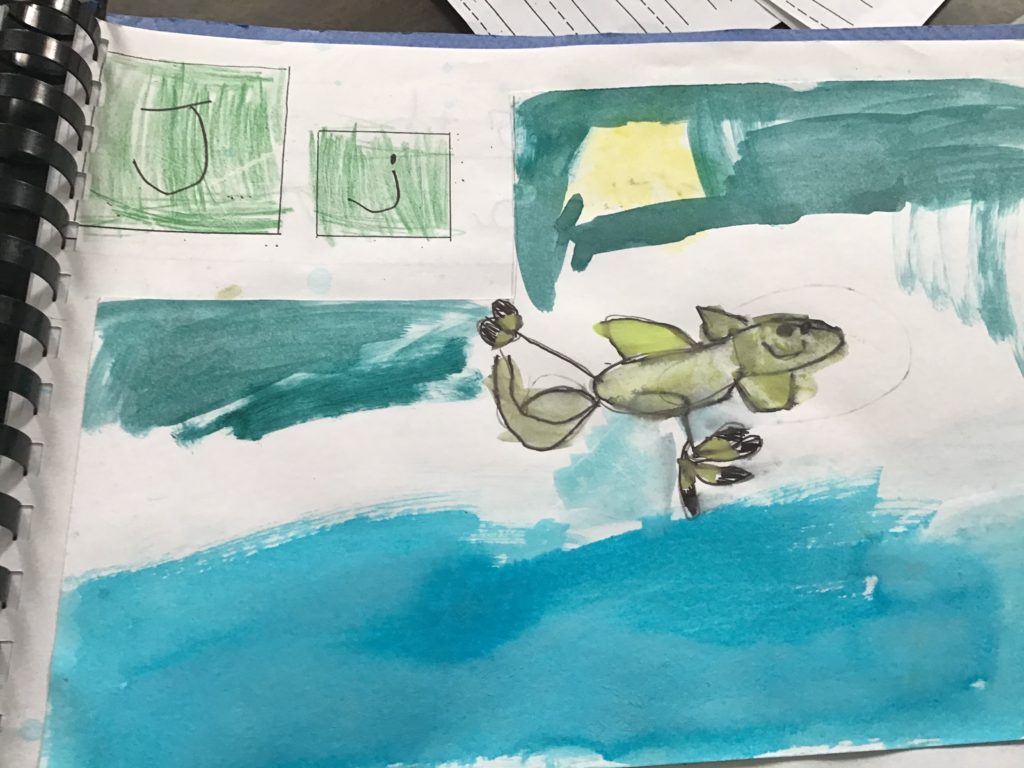 This fall we resumed an Animal Classification Class that we had started last year. It included last year’s children and our newer children as well. We began with a long read aloud (and slide show-once we figured out how) called The Most Beautiful Rooftop in the World by Kathryn Lasky. It is a dense book but allowed us to think about a wide range issues while looking at a particular habitat. We were able to meet a scientist, Meg Lawson, who had a question she wanted to answer. As a class we were able to think about her question as we first started to read…”Do leaf cutter ants help the Amazon trees grow so tall OR do they hurt the trees?”
This fall we resumed an Animal Classification Class that we had started last year. It included last year’s children and our newer children as well. We began with a long read aloud (and slide show-once we figured out how) called The Most Beautiful Rooftop in the World by Kathryn Lasky. It is a dense book but allowed us to think about a wide range issues while looking at a particular habitat. We were able to meet a scientist, Meg Lawson, who had a question she wanted to answer. As a class we were able to think about her question as we first started to read…”Do leaf cutter ants help the Amazon trees grow so tall OR do they hurt the trees?”
Some comments:
- Althea – eating leaves will kill the trees.
- Jack – (responding to negative effects of ants) ants may help by eating the grass at the bottom (maybe taking away some of the competitor plants
- Oliver – the insects maybe like aphids and they leave gooey stuff on the trunk or bark (thinking perhaps how some insects make use of other insects
- Ava – (rethinking Jack’s response) maybe ants hurt the tree at the root. They may
try to help it at the top but poison the root - Althea – (maybe reflecting on her answer) water comes out of the leaves and ants
want the water (are trees and ants competitors?)
We then read about people who inspired her. This lead us to talk about who inspired our children. Then later to talk about one of the people who inspired Meg. Harriet Tubman was an inspiration to her and it brought us to a hard subject. What is enslavement? Also, what is survival? However, we started with the question of what can we or should we own?
- Jack – houses
- Erika – money
- Alasdair – water bottles, but not too many
- Jameson – chairs
When presented with the question of owning air:
- Jack – no, we all need it
- Amaar – we can only share air
When presented with the question of owning ideas:
- Isaac – if they are yours, not anyone else
When presented with the question of owning a person:
- Oliver – no we shouldn’t, but later in the conversation came back to add; parents own their kids when they are little but not when they grow
- Isaac – yes when you are born to your own family
- Amaar (disagreeing) you don’t own the baby because it is born to the family
There was more but we went on to discuss that Harriet did not want to be owned by someone so she ran away. Since she had never been paid for her work, she had no money but still had to survive.. Meg Lawson admired Tubman teaching herself and learning so much about plants and animals to survive.
As is our pattern, we do what we call a S-L-O-W read which enables us to have many discussions along the road. Isaac was able to bring us to an important moment as he called out during one session, “Plants are living.” When asked what made him say that plants are living:
- Isaac – because they grow
- Eating was also added to the list of attributes for living.
That made Jack think of a plant that eats animals and showed us with his hands
- Oliver helped Jack’s memory with “the Venus Flytrap”
- Ava – gave us the word that describes many plants eating – photosynthesis, she explained which is when leaves use sunlight to make food for their plants.
That led us to a discussion of living and non-living in which robots became a questionable in-between category. This also helped Isaac clarify that everything that is alive dies. And the discussion went on adding ambiguity, always good, to the issue but got everyone thinking.
Eventually, we began to talk about the difference between a habitat and a home. It was not clear to children how they might differ.
- Althea – a place where animals and plants call home
- Alasdair had a great question: What does an animal eat? Is an animal habitat? (These words so often get used together that it is easy to see how they might be conflated.)
- Amaar – a place where animals live – mountains, grasslands, deserts, waters, trees, different animals live in different habitats where they have food
- Ava had another good question – When animals live in that habitat, can other animals get in that habitat?
- Alina was trying to put together animals, food, shelter perhaps as parts of a habitat – Bats have/need fruits and a cave and forest and trees.
- Erika – a cave is a habitat
- Jack – where horses in the Wild West are amd tjem bpbcats cp,e back. They might eat the horses and snakes might go after the horses. (perhaps responding to Ava’s thoughts. Jack is putting together predators and prey in a habitat which might lead to answering Ava’s question at some point).
- It was clear we still needed to follow up looking at the difference between a home and a habitat which we did.
By the end of the book, we were able to spend a while talking about the interdependence of the plants and animals in the rainforest and the children enjoyed a slide that included an anthropomorphized poop to show the relationship of trees, fruit, howler monkey’s and their poop to the dung beetle, birds and new baby trees.
Having taken most of this semester to read the first book, we are still on our second, which is called Lifetimes. This book helps young children recognize that everything living has a lifespan. It can be a day, a few days in the lifespan of an insect and up to a thousands of years for a Sequoia tree.
- Amaar – you never know how long life will be until life ends.
- Oliver – (thinking about what a whale has a long lifespan and a halibut a shorter one) maybe because the whale has to grow so much bigger
- Isaac – responding, maybe because bigger animals usually eat smaller animals.
As we will finish our second book right after we return in the new year, our third book will be The Butterfly and the Lamb. It is another short book which helps us classify animals by whether they need a period of nurture by an adult or whether they are born with the ability to survive independently.
As you can see, our ship has left the port and we are on a long journey. We will continue our journey’s logbook.